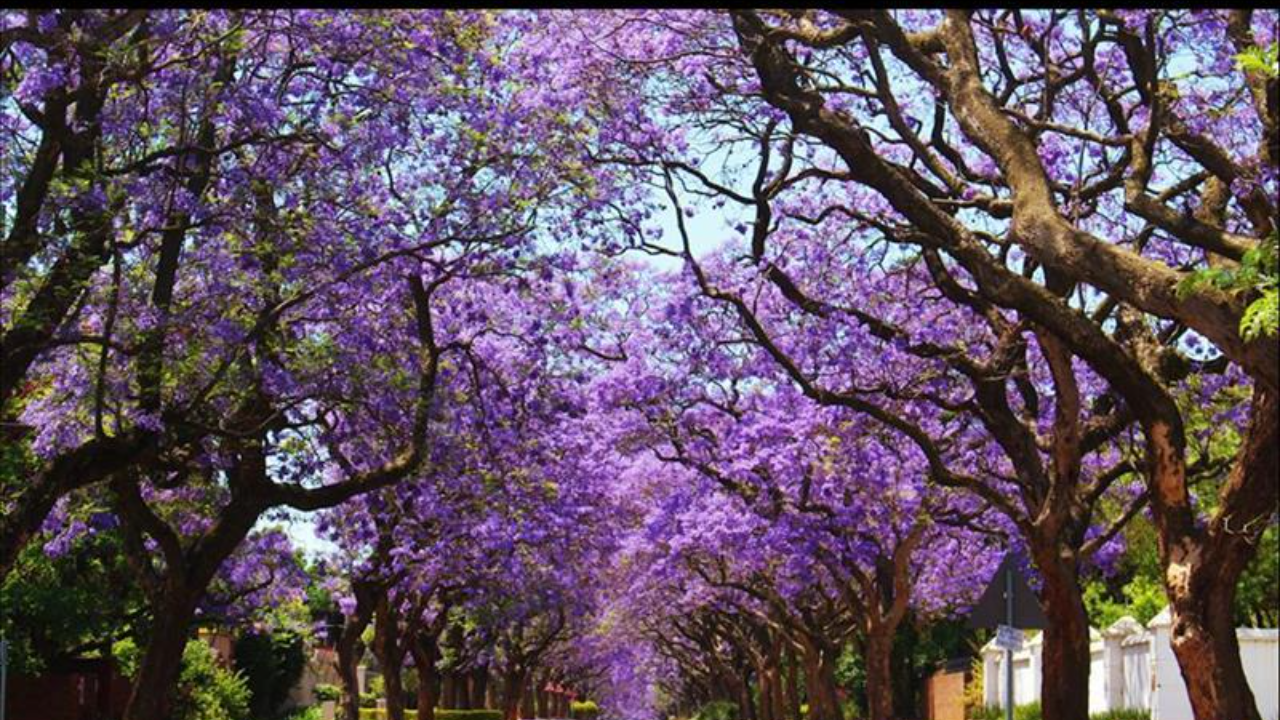News
Early Flowering of Jacarandas in South Africa: A Sign of Warning

In the month of September each year, South Africa’s Gauteng province transforms as it becomes adorned with a vibrant hue of purple. This captivating phenomenon results from the blooming jacaranda trees (Jacaranda mimosifolia), which paint the urban landscape of cities like Johannesburg and Pretoria with their distinct purple flowers during late spring. This yearly display is a notable feature of Gauteng’s extensive urban forest, where approximately 16% of the land is covered by trees—a remarkable example of a densely vegetated artificial urban forest on a global scale. An astonishing number of over 10 million trees grace the city of Johannesburg alone. Introduced as ornamental additions to the streets of suburbs and central business districts, jacarandas have a history dating back to the early 1800s when they were brought to Pretoria and, subsequently, Johannesburg as reported by Menafn.
Also Read: Spanish Federation Alleges Hermoso’s ‘Lies’ About Football Chief’s Kiss
An interesting historical note is that long-term residents who have witnessed Gauteng’s evolution might recall that jacaranda didn’t always bloom in September. In the 1920s and 1930s, their flowering season began around mid-November. However, as time progressed, the date of bloom gradually advanced, shifting through October and eventually to the early weeks of September. This shift in the timing of natural events, termed “phenological shift,” is a phenomenon observed globally, often attributed to the impact of climate change.
The trend of earlier flowering has also been noticed in other parts of the world, notably with the renowned Japanese cherry blossoms. These blossoms, famous for their association with cultural events and tourism, hold the world’s longest-recorded phenological history. Studies on cherry blossoms have revealed that the current blooming period occurs earlier than at any point in the past 1,200 years.
A recent study delved into the shift in the timing of jacaranda blossoms. Published in the Journal of Urban Forestry and Urban Greening, the study compiled a comprehensive record of flowering dates from 1927 to 2019. This data was sourced from news reports and social media posts, allowing for insights into the phenomenon’s historical evolution. The records confirmed the advancement in flowering dates, indicating a mean rate of improvement of 2.1 days per decade.
To understand the underlying drivers of this shift, the study analysed meteorological data across Gauteng. Against rising temperatures, the flowering trend advanced, with daily maximum temperatures increasing by 0.1-0.2°C per decade and daily minimum temperatures rising by 0.2-0.4°C per decade. However, shifts in rainfall patterns were less uniform.
This earlier blooming comes with risks. Flowering too early puts plants at risk of frost damage during late winter, and they often need to complete their dormancy. While phenological shifts demonstrate adaptation by plants and animals, these advancements in flowering dates cannot continue indefinitely. There’s a critical threshold beyond which the flowering season may no longer be successful.
Climate factors like temperature and rainfall drive phenological shifts. For most plants, spring blossoms are triggered when temperatures surpass a certain threshold following a period of dormancy. Factors like chilling units or specific numbers of days below a threshold temperature also play a role. In the case of jacarandas, the climatic driver causing the advance in flowering is primarily the daily maximum temperatures during June—part of the tree’s dormant period.
As global temperatures continue to rise, the risk of heat stress to these trees increases, ultimately impacting their ability to adapt through phenological shifts. While this study focused on jacarandas, its findings carry broader implications for urban forests and highlight the need for further research to understand and model these changes comprehensively.
Furthermore, the unique position of jacarandas as a beloved yet invasive species adds complexity to the issue. The study’s results sound an alarm for the future of Gauteng’s urban forest and call for a collaborative effort in gathering data from diverse sources to comprehend better and address these evolving patterns.
Also Read:
Prayers for Leon Schuster as He Sends Boks Message from Hospital
Follow us on Google News
Photo: Facebook / @Menafn

















